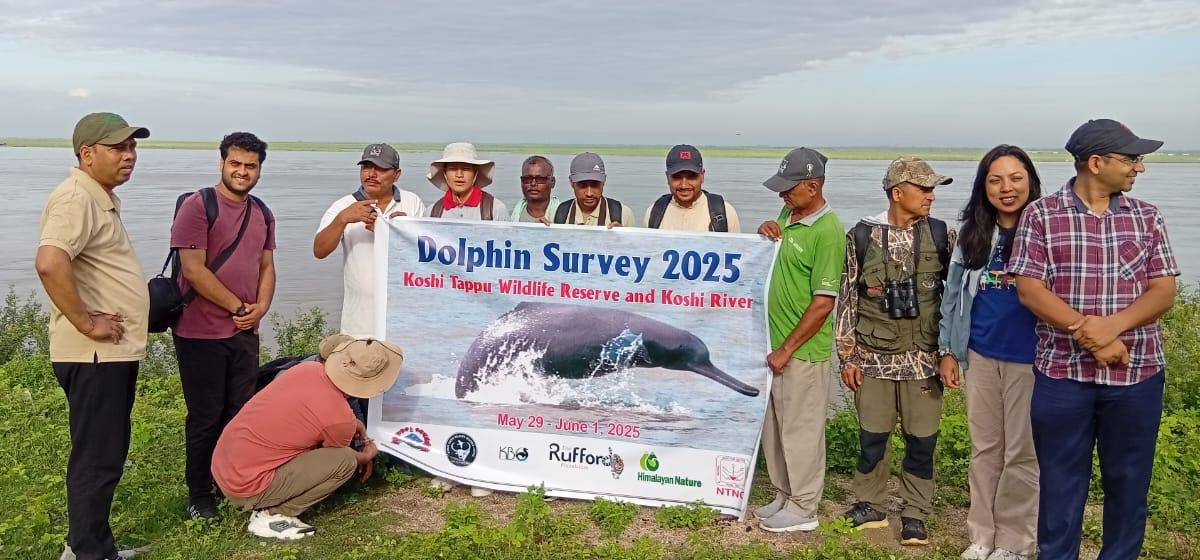The river runs a length of 80 km from west to east in the border region of Nepal and India in Kailali, and every year, the DDC sanctions contracts to the local businessmen for fishing in the river. Besides the local contractors, Indian contractors are also very much interested in doing business here.[break]
Dolphins have been declared an endangered species in both Nepal and India. However, in India, they are also the national aquatic animals.
Gangetic dolphins migrate in search of food to Mohana River and other rivers like Patharia, Kanda, Rapti, Guraha, and Kateni in the rainy season from the Ganga, the trans-boundary river of India and Bangladesh.
Since monsoon is mating season for most fish species, most fishing contracts take place during this time of the year. Mohana River is the only river in Nepal that runs from west to east. These kinds of rivers are important from biodiversity point of view and are also environment friendly.
This year, over 200 dolphins have migrated to Kailali. Bijay Raj Shrestha, secretary of Dolphin Conservation Center, says that this year there are more baby dolphins than older ones.
“These baby dolphins can get trapped in the fishermen’s nets,” says Shrestha.

Photo Courtesy: Padam Bista
Despite protests from conservation workers, the DDC signed a contract of Rs 500,000 just last month. Shrestha laments the fact that despite earning millions from selling stones and gravel from that area, the DDC is risking the extinction of an endangered species for a small fraction of that amount.
Locals of Chandan Chowk, Bela, Pasewa, Kadiya, Fareda and Deep Nagar come to fish in Mohana River located near the Dudhwa Tiger Reserve along the Indo-Nepal border in Uttar Pradesh, India.
“In the trans-border meeting for conservation, the issue of the role of India in conservation is the main focus,” says Kailali DFO Rajendra Singh Bhandari.
According to Bhandari, the level of awareness about conservation is more widespread in the communities of Nepal than in India and that poses a threat to dolphin conservation. He adds that if dolphins are to be protected, then the issue must be addressed at a diplomatic level.
According to Gokarna Sharma, Local Development Officer in Kailali, various terms and conditions need to be followed by the contractors who want to fish in Mohana River.
“Not using small nets, letting go of dolphins that get trapped and not violating the rules and regulations are some of the conditions put forward to the contractors,” says Sharma.
The locals, however, complain that the contractors don’t care about anything else besides profit. Even though terms and conditions have been set at the insistence of conversation workers, there is no monitoring of the same, and hence they are being violated.
Sharma agrees that the inspection process is weak as the river is located far away from the district headquarters. Citing that he is not against conservation of dolphins, Sharma adds, “If the issue is talked about in the council meeting, then I’ll pass orders to stop the contractual process.”
In 2001, an area of 45 km of the Ganga River from Pahar village to Sultangunj in Bihar was declared a natural habitat for dolphins and thus conserved. In 2006, India declared dolphin as its national aquatic animal. The dolphins migrate from Ganga to Karnali and its tributaries and when the water levels start to drop, they return to Ganga.
Endangered dolphins face risk of extinction





































